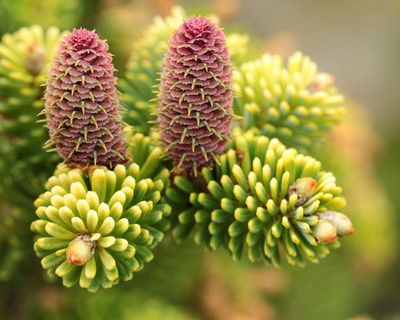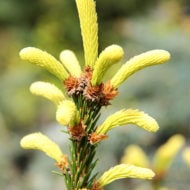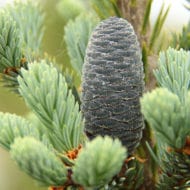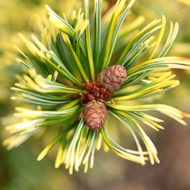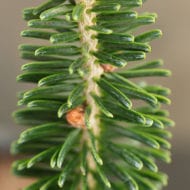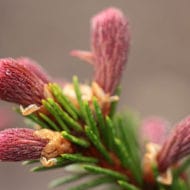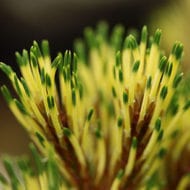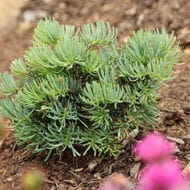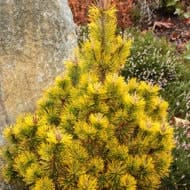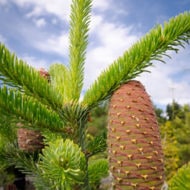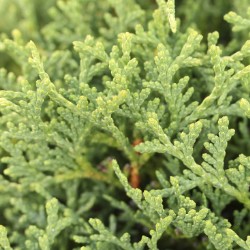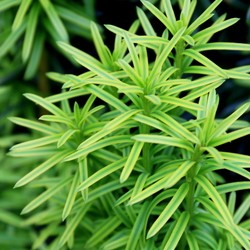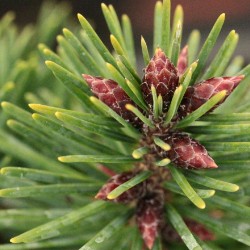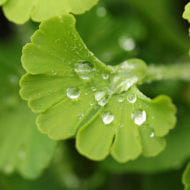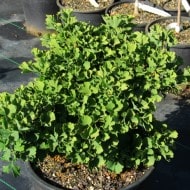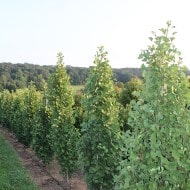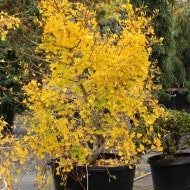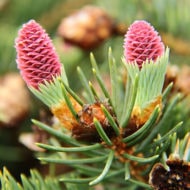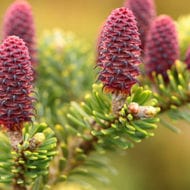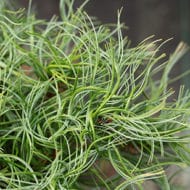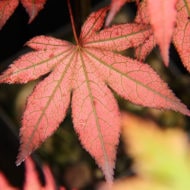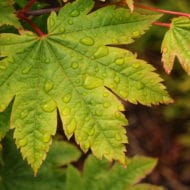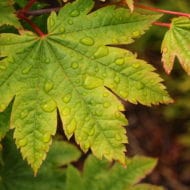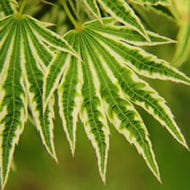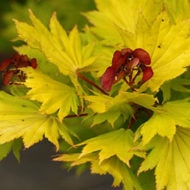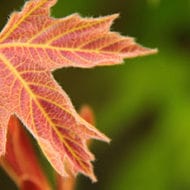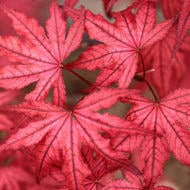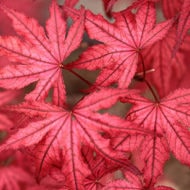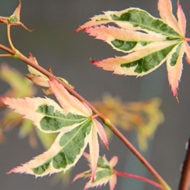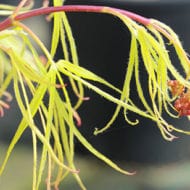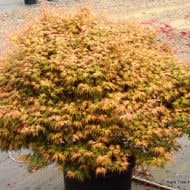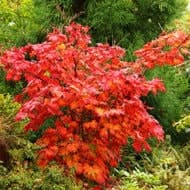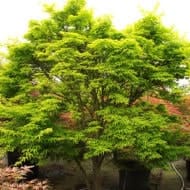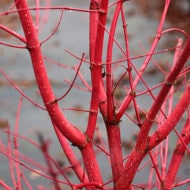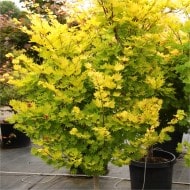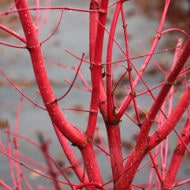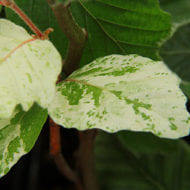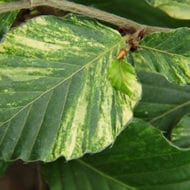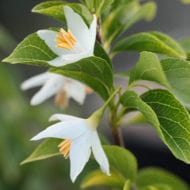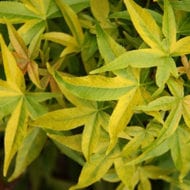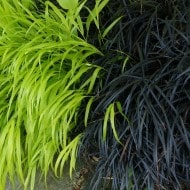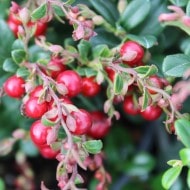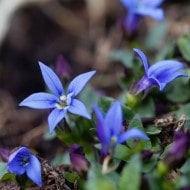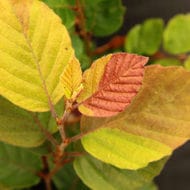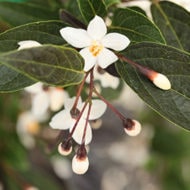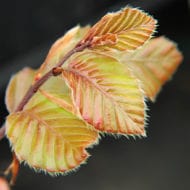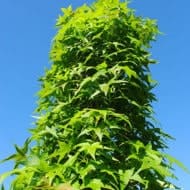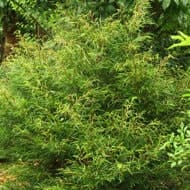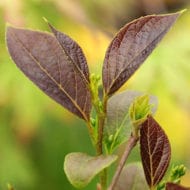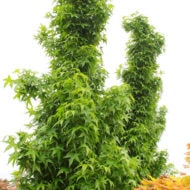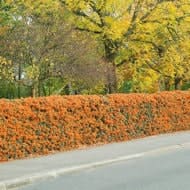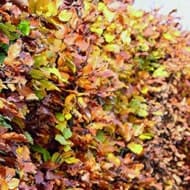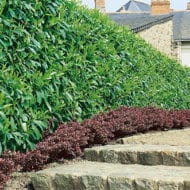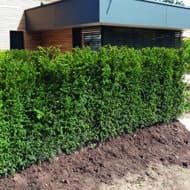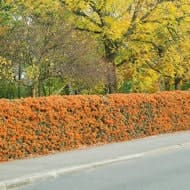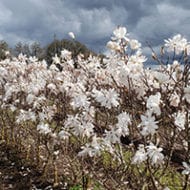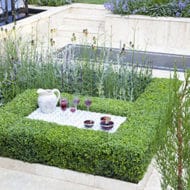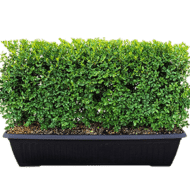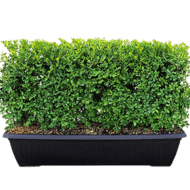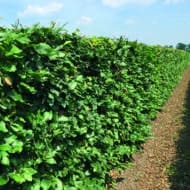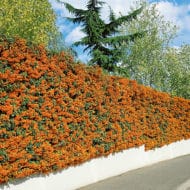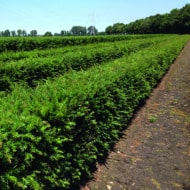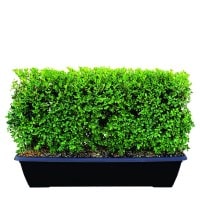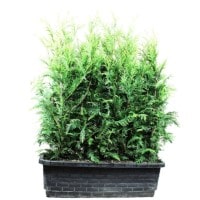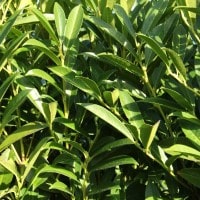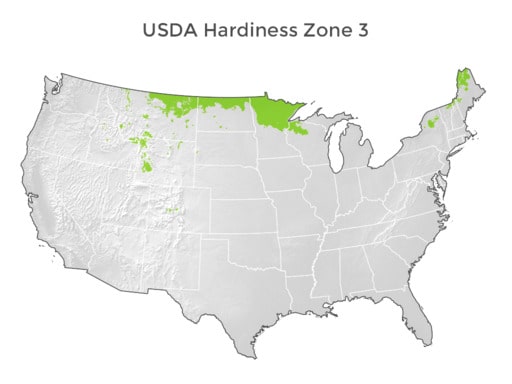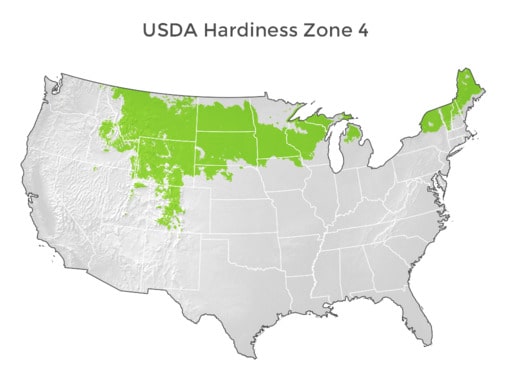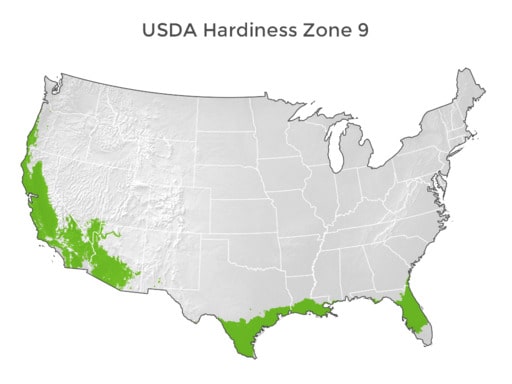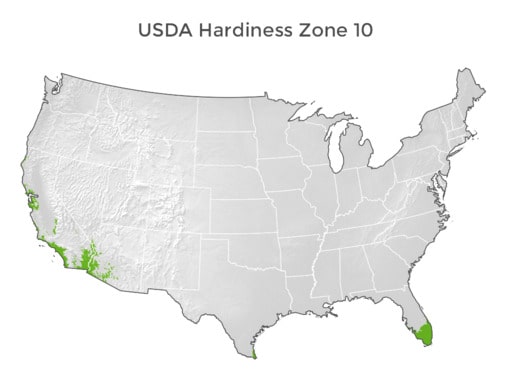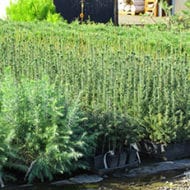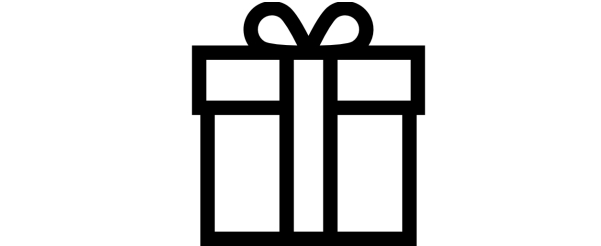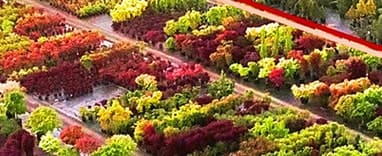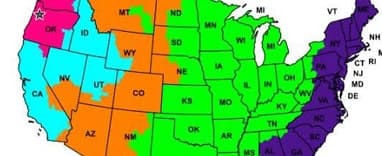Shot-hole Fungus
on Schip Laurel

Once planted in ground, the holes will not be on the new growth
Shot-hole is an omnipresent issue of small holes in leaves resulting from growing laurels in containers for nursery production. Despite nursery best practices, shothole cannot be avoided when growing laurels in containers, but it goes away once the container-grown plant is placed in the ground. Some shot-hole on your plants is not a cause for concern – it’s just temporary. The most important thing is that the root system is healthy and that you quickly plant and water your plants in to get them established.
Shot-hole fungus, or Coryneum blight (Wilsonomyces carpophilus) is a common disease found primarily on species of Prunus, such as peaches, apricots, flowering cherries, flowering plums, almonds, and cherry laurels, including Schip laurel. It is not a serious threat to these trees, and is often seen in nursery production. But with good practices and proper siting, shot-hole fungus is resolved once planted in the garden.
Description
Shot-hole fungus is most visible on the leaves, but also affects buds, stems, and fruit. The damage starts as red or purplish spots which turn brown, dry out, and drop out of the leaf, giving the appearance of gunshot holes. It is unattractive on beautiful, shiny Schip laurel leaves, but with proper care and treatment, new growth will replace the tattered, affected foliage.

Trees and hedges can be infected any time during the year, but the fungus can be especially severe following wet winters and warm, humid springs with limited sunlight in cloudy skies.
An infection can spread by splashed rainwater and overhead watering, especially when there is not enough air circulation through the tree. A humid environment around the leaves encourages growth of the fungus, so it is important to create enough air spaces for good circulation. The damage is most prevalent and visible in mid to late summer, and the fungus can overwinter and cause damage again the next season if not controlled.
Treatment
In the nursery setting a copper fungicide is used to minimize shot hole. This is typically no required once the plants go into the ground.
Planting in the ground with watering as necessary is the best treatment. Do not overwater your plant, just provide watering as necessary. The new growth should be disease free. Enjoy!
Management

Thin out excess branches every year to afford good air circulation, and prune off the lowest growing branches to prevent contact with splashed rain or water from a sprinkler. Careful, clean practices year-round will go a long way toward keeping your Schip laurel healthy and free from shot-hole fungus.
When planting the laurels, make sure you situate them in plenty of sun with good air circulation around them to discourage any fungal growth. Watering should be done by drip irrigation or low-pressure sprinklers to minimize the spread of fungus by water splashed on the foliage.


